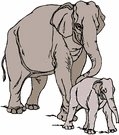
Worksheets and No Prep Teaching Resources
Reading Comprehension Worksheets
Animal Themes
Animal and Biomes Basics Theme Unit

Animal Themes
 Worksheets and No Prep Teaching Resources Reading Comprehension Worksheets Animal Themes Animal and Biomes Basics Theme Unit |
 Animal Themes |
| edHelper's suggested reading level: | grades 7 to 10 | |
| Flesch-Kincaid grade level: | 8.07 |
| Print Cells (font options, pick words for additional puzzles, and more) |
| Quickly print reading comprehension |
| Print a proofreading activity |
| Cells |

|
 |
Create Weekly Reading Books
Prepare for an entire week at once! |
| Leave your feedback on Cells (use this link if you found an error in the story) |
 |
Animal Themes
|
 |
Animal and Biomes Basics Theme Unit
|